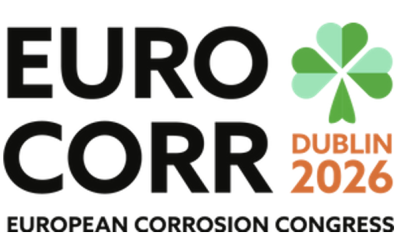This is a new regular column where readers can submit generic (not specific project) questions relating to corrosion protection, to be answered by corrosion experts. This month, the questions relate to zinc rich coatings and the problems of monitoring CP on pipelines affected by induced AC
Question:
With the advent of high quality three layer polyolefin pipeline coatings and liquid or heat shrink field joint coatings having similar corrosion barrier characteristics, current densities for Cathodic Protection (CP) have been greatly reduced. These coated pipelines when in the presence of high voltage overhead power transmission systems tend to experience high induced a.c. voltages as well the possibility of phase to ground faults, which can create a ground potential rise and damage the coating and pipe steel. To provide personnel safety and to protect pipeline integrity induced a.c. and fault a.c. mitigation is required. When such mitigation measures are installed they often take the form of electrical grounding using liner electrodes of zinc or copper connected to the pipeline via d.c. decouplers, where these decouplers proliferate due to the design requirements they can adversely affect the operators’ ability to undertake close interval potential surveys (CIPS) due to capacitor discharge. This discharge supports what should be the IR free potential during the rectifier off cycle thereby providing erroneous and misleading results.
Given this issue what can be done to ensure the pipeline is correctly protected and can the situation be controlled such that CIPS may be carried out, and if not what are the alternative technologies which will prove assurance that protection has been attained? AN
Answer:
Decouplers on well-coated pipelines can affect off potential readings during CIPS testing. The engineer measuring the results may witness irregular off potential waveforms at or near to where decouplers are installed. Most notably, the off values will be excessively and un-characteristically negative, and where there are multiple decouplers, the effect can be magnified and difficult to ameliorate. It could be incorrectly concluded that the pipeline was well protected, however it is known that such off potential values are in error. In some cases, such polarized values are not actually possible on a protected pipeline and instead of having a clean on/off potential waveform it is observed that the off potential is supported at a much more negative value.
In the past several tests have been undertaken on well coated pipelines to improve the response during the IR cycle including, capturing the reading later in the cycle, setting the on/off interruption cycle for longer periods or removing the decouplers from the system. These measures were not in all cases successful, and in the latter case, removing the decoupler can result in an unsafe situation as the induced voltage could rise above the 15V ac safe level established by NACE SP-0177 2014.
Given that disconnecting the decouplers in the presence of induced and fault a.c. is a high-risk strategy from a personnel and livestock perspective other methods of providing IR free potential measurements need to be relied upon. Such measurements can be provided by means of coupons using a magnet and a reed switch, to provide potential measurements which can be relied upon to provide an indication of present and ongoing protection. IR free coupons represent a low-cost option for obtaining polarized potentials because they avoid measurement errors due to current flow in the soil and are independent of the pipeline readings and the effects of decoupler capacitor discharge. Coupons may be used for any application where an independent reading is required. In addition, CIPS is not the only method in which pipeline integrity can be established as a DCVG survey may be carried. DCVG is an important and reliable survey method in pipeline construction and in the past has provided an accurate method of locating and recording the severity of line pipe coating defects which expose bare steel. Where indications have been located with DCVG they can be exposed and any damage repaired. DCVG provides a tool which allows the greater majority of coating defects to be located, excavated and repaired thereby limiting the CP current demand and improving pipeline protection. TCO
Readers can submit questions for possible inclusion in this column. Please email the editor on, brianpce@aol.com



